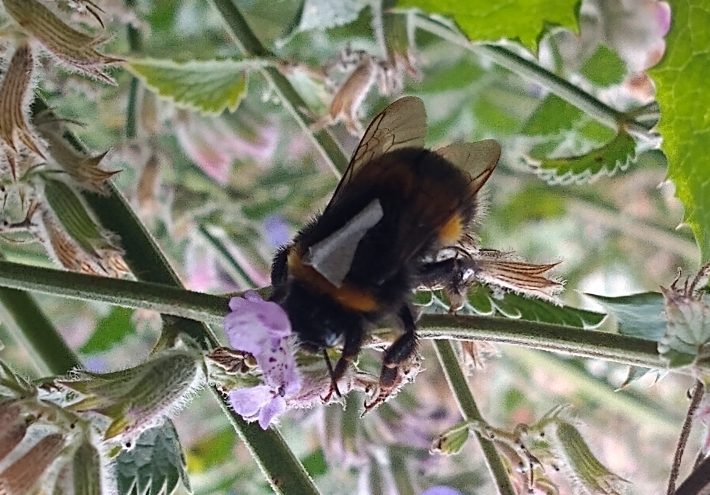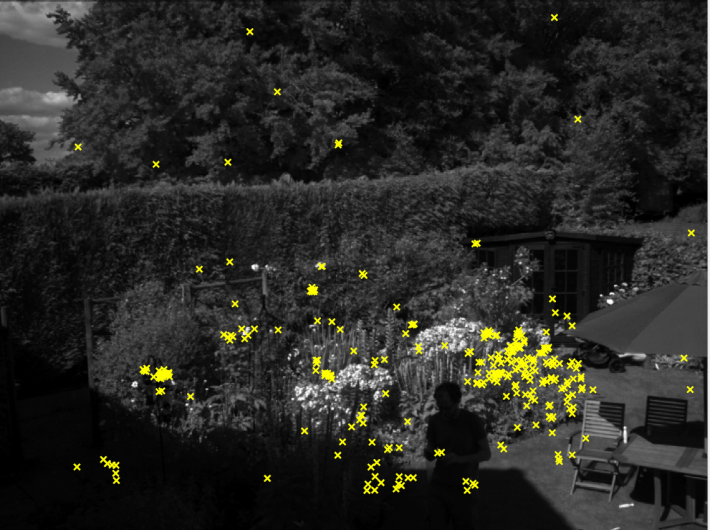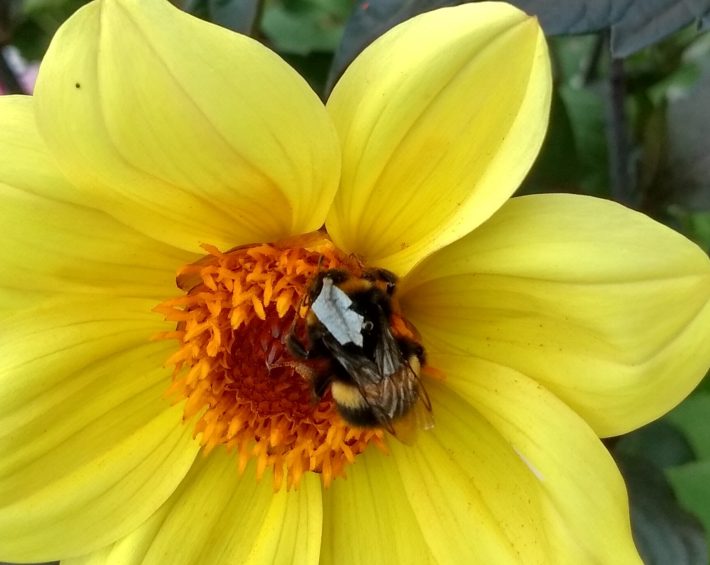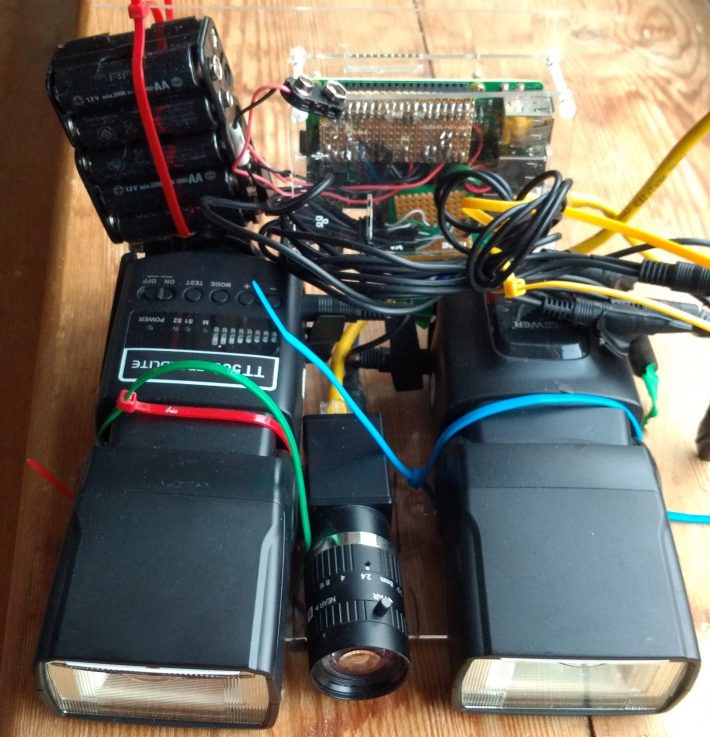Researchers make ‘high vis vests’ to help monitor bee behaviour
A team of researchers from the University of Sheffield and The Bumblebee Conservation Trust have been trialling new, low-cost ways to monitor bee species in the UK, by dressing bees in high visibility retroreflective vests. This novel research will be presented at the British Ecological Society’s virtual Festival of Ecology.

Researchers attached retroreflective tags to seven species of wild bee and to a commercially bred UK bumblebee subspecies. Then, the foraging behaviour and 3D flight path of various bees was monitored using the web interface of a custom-built, real time tracking system.
Tracking bees in the wild is a critical part of understanding their ecology, allowing scientists to deduce their foraging and navigational behaviour, as well as their nest preferences.
Currently, it is very difficult and expensive to monitor bee populations. Commonly used methods such as harmonic radars are biased toward larger species, such as bumblebees, which are large enough to withstand the weight of the radar’s tag. As such, there are several unknowns regarding the behaviour of the UK’s smaller bee species.
Michael Smith, lead author and computer scientist at the University of Sheffield, said, “Finding the bee itself is difficult, and finding wild bee nests in the first place is massively difficult and time-consuming, especially for rarer or less-known species. This tool hopefully will make finding them far easier, making these studies a practical approach.”
The system proved successful in monitoring seven wild species (over 100 individuals), across two field sites in the UK, including a wildflower patch at the University of Sheffield. This involved smaller-bodied species such as honeybees and the solitary leafcutter bees. The tracking system was able to detect bees from up to 40 metres away and tags were still detected a week after deployment. The actual retroreflective tag is made of the same fabric as cycling high visibility vests.

Retroreflective materials such as high vis jackets are useful because when light hits them, it bounces back to the source. So, the researchers used a camera with a flash to take a photo of the bee, and the bee in its retroreflective vest appears as a tiny bright dot.

Michael Smith, said, of the pilot test, “We surprisingly found one of our buff-tailed bumblebees several metres up in a pine tree nearby, about 33 metres from the tracking system. It’s not somewhere we would usually have looked, eliminating some human biases and motivating the system’s use for re-observation studies”
In addition to their durability, the researchers found no significant difference in the length of foraging time or number of flowers visited between tagged and non-tagged individuals. These results suggest that methods such as this could be used to safely monitor bees across their lifespan.
The bees were captured with a net and transferred into a queen marking pot, commonly used by beekeepers, and then immobilised using cold air, allowing the tags to be safely and non-invasively deployed.
The tracking system is built of off-the-shelf low-cost components and consists of a camera with a global electronic shutter, a flash, and a Raspberry Pi computer. The electronic shutter allows for a very short exposure, which lets the light from the flash illuminate the scene, rather than the sun.

A machine learning model was trained to automatically identify a tag within an image frame and to learn the difference between real tags and various false positives. The whole system can then, in real time, detect the appearance of a bee in the field of the camera or discard false positives, such as a piece of pollen. By using a system capable of real time detection, researchers can manually search for the bee and corroborate if the tracking system has correctly detected a real bee and find which individual has been detected.
Richard Comont, Science Manager of The Bumblebee Conservation Trust, said “Being able to track bees from easy-to-find foraging sites back to the hard-to-find nest gives us the chance to find more nests, and nests much earlier in the life cycle. That means that it’s much easier to establish nest site requirements, which can be taken into account when doing conservation work”.
There are also some pending improvements which will upgrade this method. The range of the photo lens is limited to line of sight and a distance of 40m using the default wide-angle lens and flash. In the current prototype, tagged bees appear as identical white dots.
Michael Smith, said, of this technique, “Given the wider changes in landscape management at policy level, being able to provide answers to foraging and nesting needs of key insect pollinators is increasingly important”.
However, this work is a significant advancement, Richard Comont said “We currently know very little about the home life of bees away from captive colonies in labs – a huge omission for this declining group”.
Future research from the group will involve using the tracking system to find new nests and training the model to distinguish between coloured filters on the retroreflective tags, allowing individual tagged bees to be identified remotely. The low cost of tracking systems such as this can allow for the scale-up of automated pollinator monitoring to address data gaps.
Michael Smith’s poster will be available on-demand until the 18th of January 2021 at the Festival of Ecology. This work is unpublished and has not been through the peer-review process yet. This online conference will bring together 1,200 ecologists from more than 50 countries to discuss the most recent breakthroughs in ecology.
Like what we stand for?
Support our mission and help develop the next generation of ecologists by donating to the British Ecological Society.